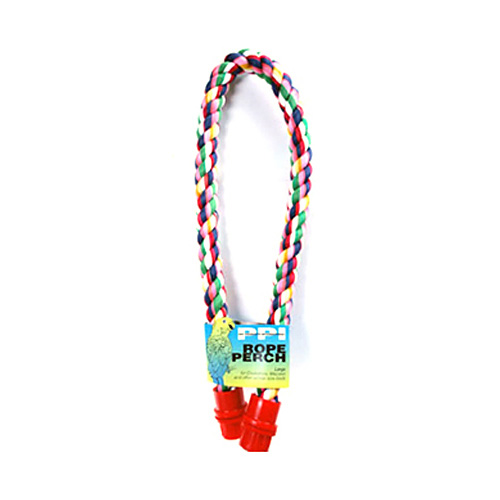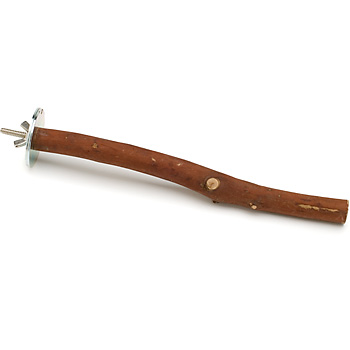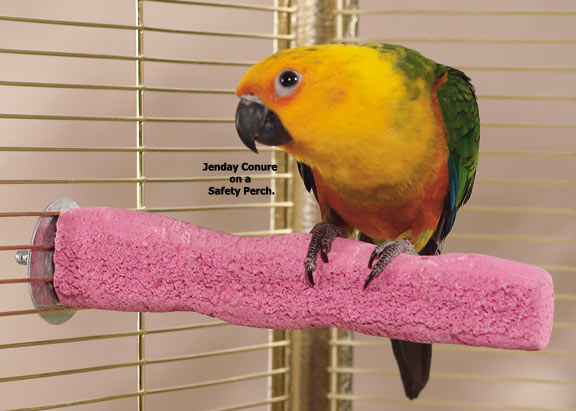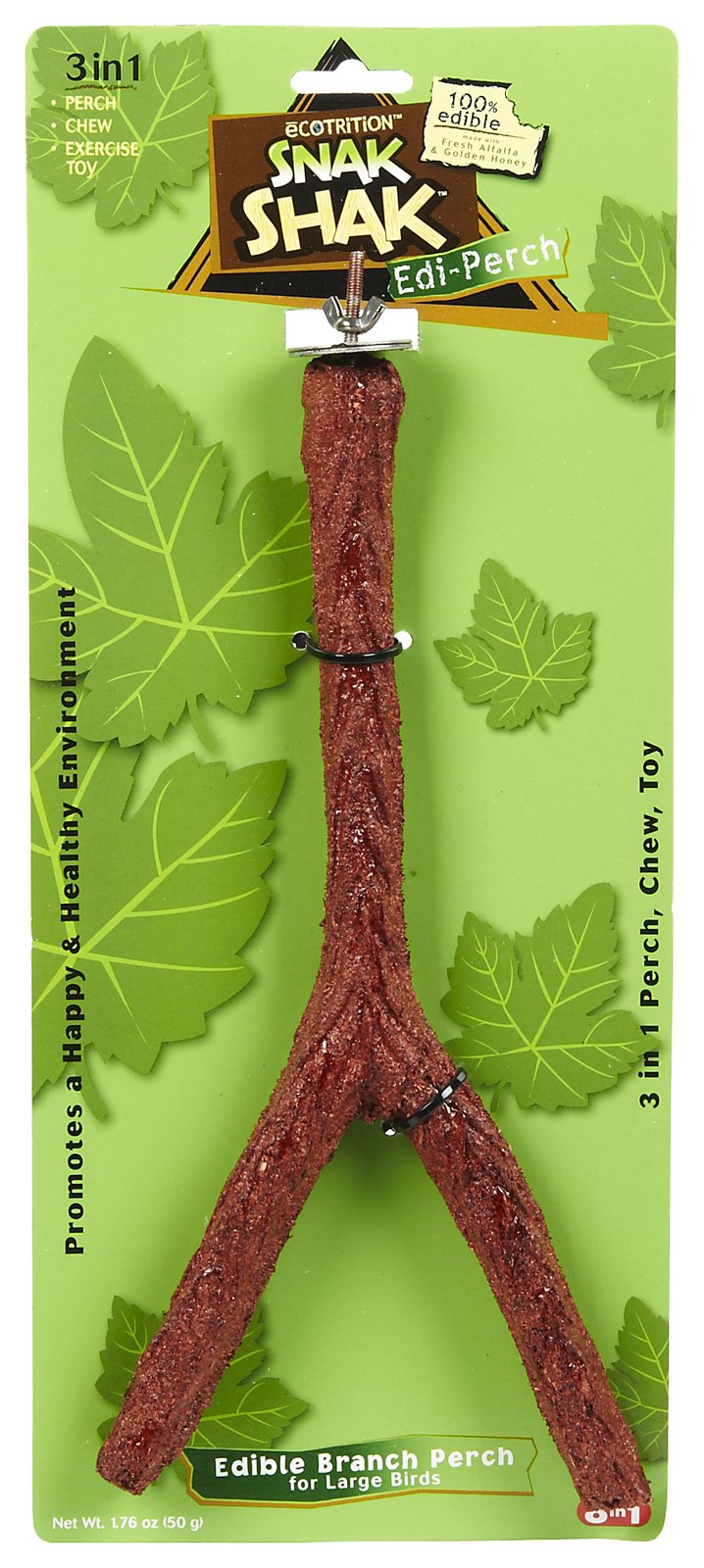TOYS
African Grey Parrots love toys! Toys they can chew on, shred, untie knots, take apart, puzzles, wiffle balls, bells and toys they can hang onto. African Grey Parrots are highly intelligent and need toys to keep them busy. They get bored easily and need stimulation.
It is amusing and downright entertaining when you get to see an African Grey Parrot in the midst of playing. African Greys play hard and can be having such a good time that they sometimes forget to hold on and fall from their perch.
CHOOSING A SAFE TOY FOR YOUR AFRICAN GREY
When choosing a toy for your African Grey Parrot, make sure it is sized appropriately. Toys for smaller birds are not strong enough and small parts can become easily detached and swallowed or lodged. Make sure there are no sharp edges and that the materials used are safe for your African Grey Parrot. If he loves bells, make sure they are "safe" – no "jingle bells" and you should replace the clapper with a small stainless steel quick link.You will soon figure out what type of toy and / or activity your African Grey Parrot prefers. Just watch and learn!
- Chewing - Destroying wood is a natural instinct for your African Grey. Provide them with wood, cardboard, rawhide and paper.
- Puzzler Toys – some African Grey Parrots like toys where they can move a lever or chew a box to get a treat
- Interactive and / or "Noisy" Toys – baby rattles, music boxes, shape interactive toys, wiffle balls, etc.
MAKE YOUR OWN AFRICAN GREY TOYS
Use your ingenuity and create toys out of normal household items to help keep your African Grey Parrot busy• Wad up bits of newspaper
• Cut up pieces of cardboard that they can hold in their "hands" and demolish
• A ballpoint pen with the ink barrel removed. Make sure it is all plastic and no metal.
• Plastic straws
• Wrap a nut or treat into a piece of paper
• Wine bottle corks – real ones only!
• Plastic bottle caps with any inserts removed
• Large buttons
• Large stainless steel bolts and washers – make sure they're clean
• Unwaxed paper cups
• Popsicle and other wooden sticks
• Cardboard rolls (unscented)
• Wooden spools and clothes pins with wires removed
Make sure you keep salvageable pieces and parts of store-bought toys that have been destroyed during playtime. Place in a "toy box", a cardboard box works great or purchase some thick natural rawhide and string the beads, blocks, etc. to create a "new" toy for your African Grey Parrot.
Change and rotate the toys every two weeks or so to help keep your African Grey Parrot active and interested. When introducing a new toy, do it slowly. If introduced too quickly, the African Grey Parrot will tend to shy away and very possibly never play with it. If the toy has never been in their cage and / or play top area, make sure they see you playing with it before attaching. Their natural curiosity and wanting to see everything and know all that's happening will encourage them to come check out the new toy with you.
From: http://www.african-grey-parrot.com/African-Grey-Toys.aspx
PERCHES
In the wild, birds will perch on many different types of tree branches which helps them strengthen their feet and leg muscles. Our domesticated birds do not have the same opportunity to do that in their homes(cages). By using a variety of perches you can help prevent and alleviate cage stress, boredom and related feather picking as well as strengthening leg and feet muscles.
ROPE PERCHES

These bird perches are soft and bendable and can be made into fun shapes for your bird to walk around on. What makes these perches really good for your bird is the softness. When a bird is forced to perch on a hard surface constantly they can get an irritation on the bottom of their feet so having a nice soft perch available gives your bird a chance to have something soft on the bottom of their feet.NATURAL HARDWOOD-CHOLLA PERCHES

These perches best mimic your parrots natural environment. This gives a domestic bird a chance to experience life the way they would have in the wild. It is important to make sure you vary the size, shape and diameter of these perches. What is great about these hardwood perches is that they are natural so they will come with texture variations which will really help your bird build up its feet and leg muscles.NAIL TRIMMING - CEMENT PERCHES

These perches are great for your bird. They help to keep your bird's nails trim so you do not have to take them as often for that dreaded visit to the vet or bird shop. Making sure that your bird's nails are not too long is extremely important. Long nails can get caught in toys and other things and your bird can get hurt trying to get their nail out. Cement bird perches also provide a completely different type of texture for your bird to perch on.EDIBLE PERCHES

This is a relatively new type of bird perch. This type of bird perch allows your bird to chew and eat this type of perch. Made of Calcium and Bee Pollen your bird can obtain valuable nutrients while sitting and nibbling away. I have seen this perch hung from the top of the cage more like a toy or it can be hung like a regular perch. The most important thing to remember is to give your feathered friend lots of options in his home. Also, keep in mind that most birds will climb to the highest perch in their cage to sleep so you should vary that high perch between all the different textures available. This way your bird is not just sleeping on the same perch type night after night.
BEAK TRIMMING ITEMS
MINERAL BLOCKS

CUTTLEBONE

A cuttlebone is not actually a bone, but rather the internal shell of the Cuttlefish, a small, squid-like cephalopod. In the Cuttlefish, the cuttlebone is filled with gasses and helps control the fish's buoyancy in the water. While for years people have harvested and used cuttlebones for various purposes, the most widely recognized use of the cuttlebone is as a supplement and exercise toy for birds.The cuttlebone is a lightweight, oblong, chalky object that is mainly composed of calcium -- making it an ideal way to supplement a birds's calcium intake.
Cuttlebones have a grainy texture, reminiscent of pumice. This texture can also offer benefits to parrots as it is helpful in wearing down overgrown beaks. It's recommended to always keep a cuttlebone in your bird's cage to promote beak and jaw exercise.
Below is a video of Rajendra sharing with us what is in Jamyang's cage.
ACCESSORIES SUPPLIERS
Below are the addresses of two of our favourite places.
1. Pets Wonderland Mid Valley Megamall
Tel: 603 2284 3388
4th Floor
Lingkaran Syed Putra
Mid Valley City
59200 Kuala Lumpur
Malaysia
Opening Hours: Mon -Sun: 10:00am - 10:00pm
2. Pets Wonderland Great Eastern Mall
Tel: +60 3-4257 7088
303 Jalan Ampang
50450 Ampang,
Kuala Lumpur Malaysia
Opening Hours: Mon -Sun: 10:00am - 10:00pm